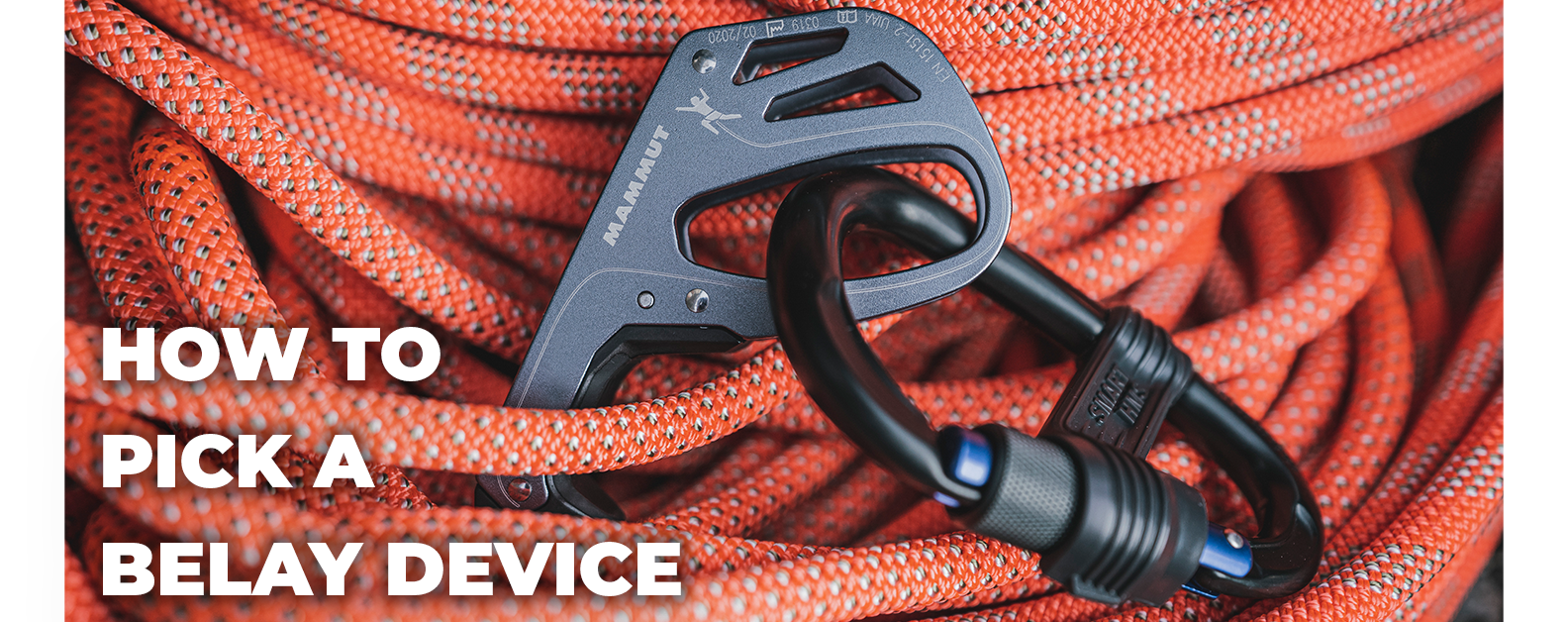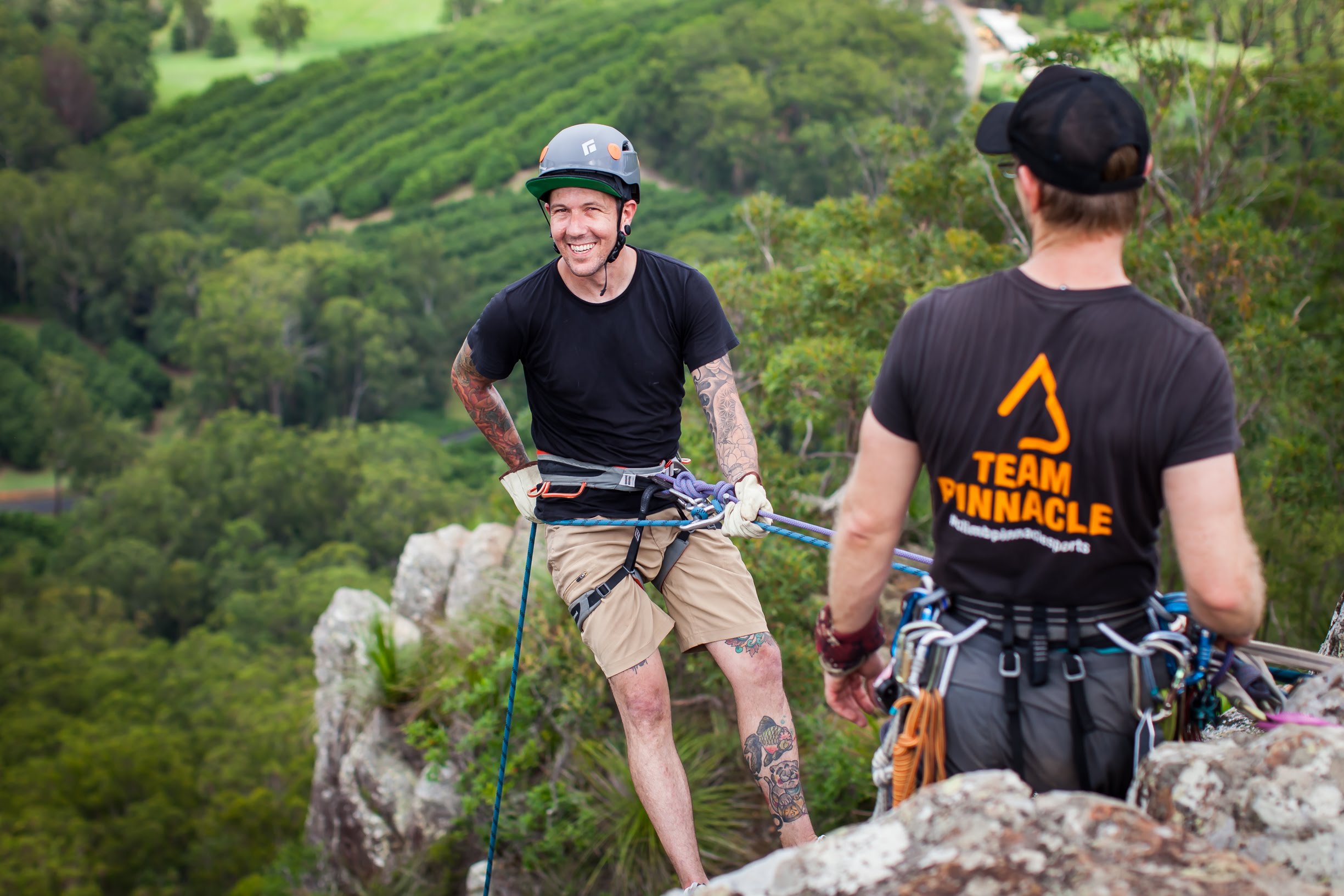
Belay devices can be divided into two main categories: assisted-braking and non-assisted-braking. Opinions can be divided, some prefer not relying on the device to do the work for you, while others say that an extra layer of security is always a good thing. Regardless, it's important to be aware of the pros and cons of the devices available.
NON-ASSISTED BRAKING
This category includes devices such as the DMM Pivot and the Black Diamond ATC Guide. Old-school plates and figure-8s also fit into this category, although they are rarely used these days. Proponents of this type of device argue that it forces belayers to be attentive and to develop good belaying habits. Other advantages include a lack of moving parts - which means less maintenance - and usually having the capacity for two ropes in the one device.
The ability to have two ropes in one device helps with longer retrievable rappels that join two ropes together (single-rope devices can also be used for the same task, but they require a more complex set up). It’s also required for half- and twin-rope climbing, which is often necessary for more adventurous climbs.
Many devices in this category have the ability to be used in “guide mode”, which is a form of assisted-braking that only works when top-belaying. Guide mode does have its drawbacks, such as making it very hard (and potentially dangerous) to lower the climber.
These devices put total control in the user's hands, which means the user has to be alert and responsive at all times, but it also means the devices tend to be quite versatile and are viable for almost any recreational climbing scenario.
ASSISTED-BRAKING
It's important to note the “assisted” in “assisted-braking” - these devices are designed to help you hold the rope, not to hold it for you. Always follow the manufacturer's recommended belay/rappel technique.
NON-MECHANICAL
This includes devices such as the Black Diamond ATC Pilot and the Mammut Smart 2.0, which rely on the geometric design of the device to provide the assisted-braking power. They're great in that they require less maintenance than devices with moving parts, they tend to be cheaper, and they are more likely to accommodate two ropes. Unfortunately, they can be a little awkward at times, particularly when abseiling or giving slack after having been loaded.
MECHANICAL
This includes devices such as the Petzl GriGri line and the Beal Birdie which rely on cams responding to the force generated in a fall to lock the device up. These devices offer the greatest security available (provided they are used correctly, of course). Drawbacks are that they can require complex techniques to use and they typically don't have capacity for more than one rope at a time. These devices tend to allow very little rope slippage during a fall, which some people say is a reason not to use them when trad climbing as impact force (which is increased by a sharper fall) can be a concern for traditional protection. Others say that the difference in impact force when using a mechanical device vs a non-assisted-braking device is negligible.
For beginners, mechanical devices can be intimidating but they are well-worth taking the time to learn to use. They offer an extra layer of security and can help reduce belayer-fatigue when projecting hard routes that require plenty of rests.
CONCLUSION
There has been a long-standing debate around the appropriateness of new climbers learning to belay using an assisted-braking device. The idea is that it's better to develop good technique and habits with the old-school devices that require 100% attention at all times. The counter-argument is that it's good for a new belayer to have an extra layer of security. There really is no right answer and if you are buying your first belay device, we would recommend talking to the people you will be climbing with and seeing what they prefer. It's also a good idea to check the diameter of rope that you will be climbing on to make sure it's in the optimal range of the device you choose. If you are lead climbing exclusively indoors, it's also good to check with your local to see if there are any restrictions on the type of device that can be used.
The most important thing to consider is what type of climbing you will be doing and what diameter of rope you are using. From there, you can narrow down the list of appropriate belay devices and choose one that will best suit your needs. The Petzl GriGri has dominated the assisted-braking market for a long time but recently there have been other alternatives released (e.g., the Mammut Smart 2.0, Black Diamond Pilot, Edelrid Gigajul). For non-assisted-braking, the Black Diamond ATC Guide and Wild Country Pro Lite offer great functionality and versatility but plenty of other options exist.
Looking for more great reads? Subscribe to our newsletter to stay up to date with the latest climbing tech, crag recommendations and upcoming events.







